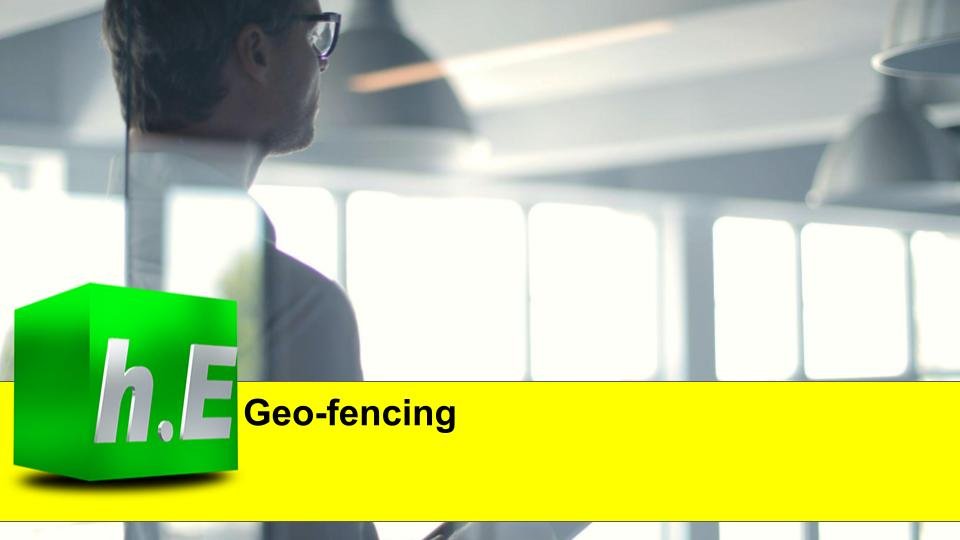Now, What is Geo-fencing?
Geo-fencing uses a global positioning system (GPS) or radio frequency identification (RFID) to set up a virtual boundary; anytime a device enters that zone, it triggers a text message or emails to the device. You can experience it when, unknowingly, you joined the geo-fenced location and got a note on your smartphone: “Please look to your side, and you will notice us. We make delicious, natural, homemade ice creams. Step in to enjoy it. To make it taste even sweeter, we have a special 25 per cent discount waiting for you.’
The communication was location-specific and was customized for you.
Deliver a pleasurable experience to invoke reciprocation and likeability principles: Take Charmin. It markets toilet paper. Research shows that people, especially women, face a problem during a day out because of inadequate restrooms in several areas—including Times Square, New York. So, Charmin had set up mobile restrooms in Times Square that anyone could use. And when they used the restroom, they also ended up using a Charmin product. Because the product was good, they ended up not only having a positive perception about it, but from a behavioral science perspective, it also invoked feelings of reciprocation and likeability among them. The next time they buy toilet paper, you know which brand they would seek out.

Earn goodwill: In the US, Uber and Lyft offered free rides on Election Day to make it convenient for voters to go out and exercise their rights. Let’s shift our discussion to India. Do brands here also display altruism? In 2017, rains brought Mumbai to a standstill, leaving a multitude of Mumbaikars stranded. Ola stepped in and offered a free shuttle service across the worse affected areas of Mumbai; Uber introduced Uber Pool Rides and suspended the draconian surge pricing; FB activated its Safety Check feature, which allowed FB users to mark themselves safe.
Why do companies consciously engage in these philanthropic activities? When someone helps you in your moment of crisis, don’t you feel a sense of gratitude towards them? Will, you did not speak well about this good samaritan to your family and in your social circle? You will have similar feelings towards businesses that extend help in moments of need. Next time you have to take a ride, who are you likely to give business to? Ola and Uber or a third party? My guess is to the company that helped you. Your family and your social circle, too, are likely to follow suit.
Acting humanitarian grounds helps businesses create advocates and reap the benefits that it provides.
A word of caution: if a business offers humanitarian service with the dishonest intent of converting people into their brand advocates, such a move boomerangs when they are exposed. Before you deploy this strategy, pose a question to yourself: what is my intention of doing this ‘altruistic’ activity? If the purpose is honorable—that is, to help people—go ahead and do it. If it is to win brownie points, shun it.
Support the local community: Customers prefer businesses that support the local community. For example, you have to buy a bottle of jam, and you have two brands vying for your wallet; both have a similar brand appeal and are priced at par. But of the two, only one bottle has a sticker that reads ‘Low Food Miles’: an indication that the distance the food has traveled before reaching consumers is low; therefore, it would håve been produced locally. Chances are you will opt for the bottle with the ‘Low Food Miles’ sticker; by buying it, you too are showing support for the community where you reside and also voting for a cleaner and fresher product.

The sampling power: A leading FMCG company dealing in packaged (wheat flour) decided to source high-quality wheat directly from farmers. Good quality wheat would result in good quality flour. They were confident that once the product entered a household, it would do its marketing and compel customers to purchase it. To generate trials, the company decided to distribute free samples to potential families. Their surmise was correct. Upon practice, people saw its superior quality and began purchasing it.
What if your product is expensive and is not amenable to being distributed as a ‘free’ sample? For example, furniture. IKEA is the world leader in selling ready-to-assemble furniture. They ‘sampled’ their table by placing their sofas at a Paris metro station. The aim was to showcase the durability of their sofas while also getting people to experience them. If people share the couch and like the experience, then when they are in the market to buy one, they are more likely to opt for IKEA.
Remain focussed and understand what will work with each type of customer. Contact HyperEffects to chart out a tailor-made business marketing strategy for your company and see your business show up on television ads, press releases, and major channel partners. A poorly designed website can repulse people from your business and cause you to lose customers before you even have them. We also work on creating, enhancing, and making the website of your company more user-friendly. For many target customers, social media is becoming an ever more popular focus for advertising campaigns as it can be a very inexpensive way to reach many different users. Use social media to get more sales for your business

